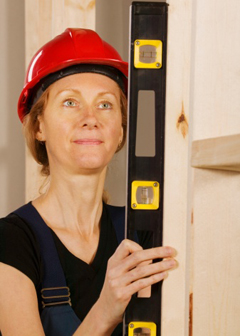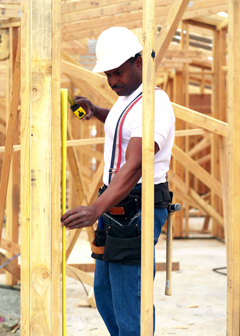Summary

| Quick Facts: Carpenters | |
|---|---|
|
$39,530 per year
$19.00 per hour |
|
| High school diploma or equivalent | |
| None | |
| Apprenticeship | |
| 1,001,700 | |
| 20% (Faster than average) | |
| 196,000 | |
What Carpenters Do
Carpenters construct and repair building frameworks and structures—such as stairways, doorframes, partitions, and rafters—made from wood and other materials. They also may install kitchen cabinets, siding, and drywall.
Work Environment
Because carpenters are involved in many types of construction, from building highways and bridges to installing kitchen cabinets, they may work both indoors and out. The work is sometimes strenuous, and carpenters experience a higher than average rate of injuries and illnesses.
How to Become a Carpenter
Although most carpenters learn their trade through a formal apprenticeship, some learn on the job, starting as a helper.
Pay
The median annual wage of carpenters was $39,530 in May 2010.
Job Outlook
Employment of carpenters is projected to grow 20 percent from 2010 to 2020, faster than the average for all occupations. Job prospects for carpenters should improve over the decade as construction activity rebounds from the recent recession.
Similar Occupations
Compare the job duties, education, job growth, and pay of carpenters with similar occupations.
O*NET
O*NET provides comprehensive information on key characteristics of workers and occupations.
Contacts for More Information
Learn more about carpenters by contacting these additional resources.










